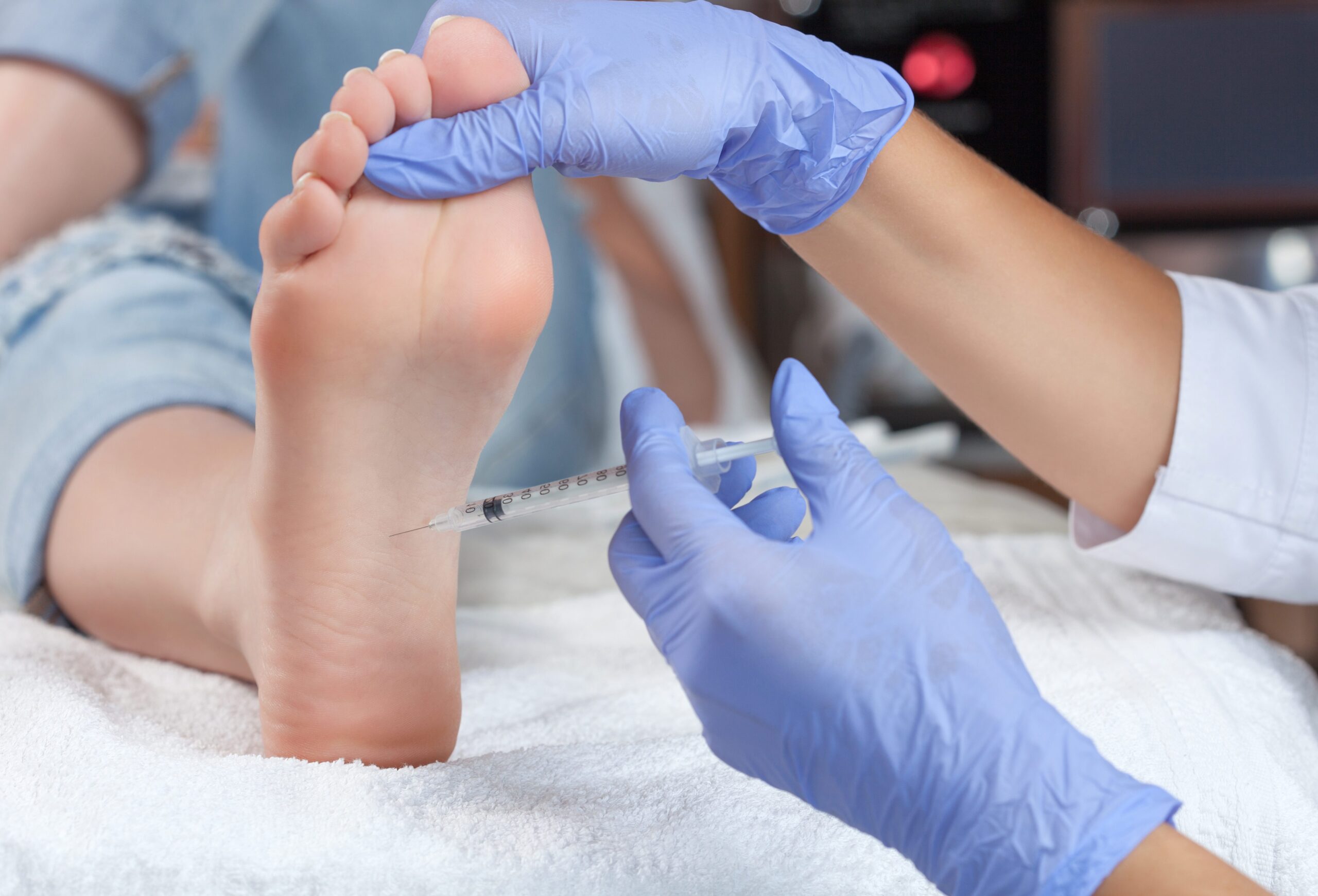Plantar fasciitis is caused by a stretching or rupture of the plantar fascia. This damage to the fibrous band that supports the plantar arch is characterized by pain in the heel and/or arch of the foot.
Fortunately, there are several non-invasive treatments available to help treat plantar fasciitis. Manual foot therapy and therapeutic bandaging performed by a podiatrist are good examples. In less serious cases, it is even possible to treat your plantar fasciitis at home.
However, when traditional interventions are not effective, we may consider more aggressive treatment. Options such as wearing foot orthotics, podiatry surgery or cortisone injections are available.
What is cortisone?
Cortisone is a derivative of cortisol. Cortisol is a hormone secreted by the adrenal glands near the kidneys.
Cortisol plays a crucial role in regulating the body. It is involved in the process of transforming carbohydrates and managing stress levels.
However, it is its anti-inflammatory properties that have led to the development and use of cortisone for medical purposes.
Cortisone is now frequently used to relieve inflammatory and joint pain.
Why is cortisone injected?
Although there are several ways to administer cortisone for therapeutic purposes, the most effective way to relieve plantar fasciitis is by injection.
Among other things, the injection method makes it possible to:
- Target the problem area more effectively;
- Relieve pain more quickly;
- Reduce recovery time.
For these reasons, the injection method is preferable for the treatment of localized pain, as is the case with plantar fasciitis or Morton’s neuroma.
How to be sure the cortisone injection works?
Of course, cortisone infiltration to treat plantar fasciitis is not suitable for all patients. However, you can take certain steps to ensure that you increase your chance of success and avoid a recurrence. This is particularly true for active people.
Below are some steps you can take to limit the risks of a recurrence of plantar fasciitis:
- Modify your recovery time between sports activities.
- Make sure you warm up properly.
- Stretch after each activity.
- Replace your running shoes periodically.
- Prioritise a return to progressive training.
If you notice that an activity or movement is causing you pain, it is important to contact your attending podiatrist as soon as possible.
I suffer from heel spurs, can a cortisone injection help me?
Usually asymptomatic, heel spurs are associated with the plantar fascia. This is characterized by the appearance of bone growth inside the heel. Heel spurs result from excessive strain on the plantar fascia.
While this condition is usually painless, discomfort can occur when the spur injures the plantar fascia. Your podiatrist may take an X-ray to definitively identify the presence of a calcaneal spur.
Once the spur has been identified, therapeutic options similar to those of plantar fasciitis can be considered to relieve inflammation:
- Immobilization of the affected foot;
- Wearing shoes with a cushioned sole;
- Wearing plantar orthotics.
If the pain persists, your podiatrist may in fact recommend a cortisone injection to relieve the inflammation.
Surgery to remove a portion of the spur may be a last-resort therapeutic option.
PiedRéseau- your guide in the treatment of plantar fasciitis
Plantar fasciitis is a painful condition that is likely to get worse if left untreated.The podiatrists at PiedRéseau are able to analyze your plantar pain and suggest the most appropriate treatment. Orthotics, manual therapy or cortisone injection – the range of our treatments is a reflection of our expertise.
Consult PiedRéseau to find out if a cortisone injection is the right option for you.

